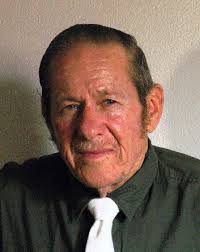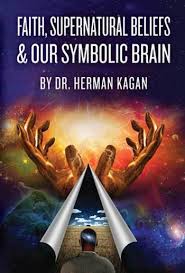 Hello Dr. Kagan and thank you for being willing to share some of your story with us.
Hello Dr. Kagan and thank you for being willing to share some of your story with us.
Before we get into the “nuts and bolts” of our interview, why don’t you share a little bit about yourself? What fun facts/tidbits would you like us to know about you? What do you do for fun or relaxation? Do you have any interesting hobbies?
I was born in Elizabeth, New Jersey in 1931. I am the youngest of three brothers and the only one still alive. My youngest older brother, Norman, was killed by a car when he was about four years old while my mother was in the hospital delivering my second brother, Jack, who is two years my senior. Sadly, Jack died in 2011 at Temple University Hospital where he was a lab technician. And unfortunately, my father died when I was about six months old so my mother, bless her heart, had the strength to be able handle all that trauma and raise me and my brother.
I have been married for over fifty-five years, and have two grown children and two grandchildren. My son lives close to me while my daughter lives in Santa Cruz, California where she went to school and graduated with a degree in Environmental Science. My son is a CPA who owns his own business in Ventura, California. He is married to a Mexican woman and any family gatherings of ours result in a large mob… Us white folks are now accepted as part of the Mexican clan.
While I was in the army, stationed in Germany in 1955-56, I learned about photography and this has been a hobby of mine ever since. I once had my own darkroom in my garage and developed, and produced, Cibachrome prints. Now I am immersed in digital photography and I use it to take pictures of family gatherings, concerts we attend, graduations pictures of my own children and
Grandchildren, nature pictures, especially birds from when my wife, dogs and I go camping in the National forests. We have been doing this for the past forty years and only last year switched from tent camping to renting ranger stations turned into cabins for the public.
My wife and I both belong to the Audubon Societies in Ventura and Conejo Valley. My house is filled with pictures of all kind of birds that feed in our back and front yards along with the hawks that come to feed on them. My hobbies now include writing which began after I retired because I wanted to leave a legacy of information and personal experiences for my grandchildren when they have their own families. After my first book I now believe I also have something to offer to others about how we adapt to and cope with our natural and man-made worlds with the symbolic brain endowed to us by evolution.
I would say that you chose a very…intense career for yourself. What was the defining “Aha” moment that started you down the path of helping others deal with various forms of trauma or abuse?
I don’t believe there was an “Aha” moment. My mother was certainly an inspiration, with realizing what she had to go through and how she landed on her feet. Add to that my experiences with my childhood friends, where I witnessed the results of parental abuse and how they left a lasting impression.
I grew up in a low socioeconomic neighborhood in New Jersey and, without a father; I depended on older kids, and my friends, for my masculine identity. I developed a strong sense of empathy, and a keen sense of what it takes to survive, at an early age.
Then my internship at the Reiss Davis Child Guidance Clinic in Los Angeles, my first job at a private psychiatric hospital after my internship, and my work with delinquent kids in the California Youth Authority made me realize the difficulty humans face; that trauma and abuse are major factors in producing disabling emotions, confused cognition, anti-social and self-destructive behavior. Once this realization set in, I then had to ask myself if I had the knowledge and capacity to help people recover from their abusive and traumatic experiences. I believed I did, and felt that if I could help, this would be uplifting to my sense of self and help me contribute to society. So off I went in a clinical direction…
In reading through your very amazing bio, I appreciated learning that, for eighteen years, you also directed a support/treatment group for children/families experiencing sexual abuse. The sexual abuse prevention program for elementary schools you helped create is also an amazing thing. Words cannot adequately describe what a blessing that is, and will be, for those in need. What was the “why” that prompted these much needed programs?
The idea for these programs developed after I was working for the County Mental Health Department and interacted with my colleagues and other community agencies like the school system, the Police Department and Protective Social Services. I was in charge of the children’s program at the Simi Valley Mental Health Clinic and many sexually abused children were sent to us by the police and protective social services. The natural thing to do was collaborate with them about this ongoing problem.
Treatment for these children necessitated the inclusion of other family members, and continued interaction with both the police and protective social services since children were sometimes removed from their home and their family had specific plans to follow or the court issued “no contact” orders which the police then had to enforce.
Eventually interactive family programs were created in Los Angeles County and another northern California county, and I became part of the interactive therapists that met together and worked on program planning. This led to the treatment support group that I and a number of other therapists created in Ventura County. With support from some of the elementary school principals, a sexual abuse prevention program was developed and instituted.
The mental health staff was involved in training the school psychologists, teachers and nurses to carry out the program and police officers and protective social service workers lent a hand by getting to know the school staff involved in the program and setting up a supportive interaction to take calls, answer questions, and respond when the school staff needed a response.
We thought the program ran well for many years but the cost of providing psychologists, teachers, and nurses, and allowing time for the training took its toll, and many schools eventually dropped out.
Dr. Kagan, being that you are a trained psychologist, I would imagine that your life’s calling has ensured that you view the world from a very fact oriented viewpoint; yet you have written a book titled: “Faith, Supernatural Beliefs and Our Symbolic Brain.” From what I’ve seen of today’s world, it seems that “Science” and “Faith Based” beliefs don’t always mesh well, or easily. Did you experience any difficulty during the writing of “Faith, Supernatural Beliefs and Our Symbolic Brain” due to the “oil-and-water” nature of “Science” versus “Faith” probabilities or situations? 
Your question brings out your observations of the rift between science and faith based beliefs–including supernatural beliefs–observations to which I agree. The scientific outlook usually considers beliefs that have no scientific foundation as based on ignorance, mythology, prejudice or sociopathic attempts to deceive the public for some personal gain and every attempt should be made to eliminate them.
Since I espouse the scientific outlook I had some difficulty trying to reconcile why faith based beliefs continue to be so entrenched. The difficulty vanished when I considered the possibility that human survival may have depended on these beliefs, and that natural selection may have had a hand in perpetuating these beliefs. I had no idea that this was an explanation to consider when I started writing “Faith, Supernatural Beliefs and Our Symbolic Brain,” so my eventual conclusions as to why supernatural and faith based beliefs persist even surprised me.
I guess my final question is simply: from this point in life, where do you plan to go? What do you still want to accomplish? Is there a figurative “torch” that you hope to pass on? If so, how can your readers help?
I sort of laughed when I read this question, because at my age I plan to stay as healthy as I can so
I can stay alive for some time. At eighty-two I’m not sure how much time I have left, but I would like to see my granddaughter, who is now a freshman, graduate high school.
I have another book in mind to write about “deception,” which I believe is an evolutionary survival tactic and I see it all around me. However, my daughter said I was too focused on the negative and strongly suggested I should also focus on “honesty.” I don’t know if it will ever come to pass, but I suggested she should write about the evolutionary significance of honesty and I should write about deception and we should collaborate.
If there is a torch I want to pass on, it would be to look at us humans as a unique animal but an animal, nevertheless, that took evolution three and a half billion years to create who interacts with each other and the world in symbolic terms, a very strange change from life interacting with each other and the world using signals and signs. Where in the hell is symbolism taking us? Readers can help out by looking at our innate nature and wondering why we have to fight against it so often and letting me in on the secret.
Dr. Kagan, let me just say thank you very much for all the fun tidbits, personal facts, and insights you have shared with me/us. It was truly an honor being able to interview you, and I very much enjoyed all that I learned. I’m certain that my heartfelt “thanks” is also echoed by all those whom you have touched and helped throughout your life – whether through personal/one-on-one sessions or via your outreach programs and shared ideas/visions with other mental health experts.